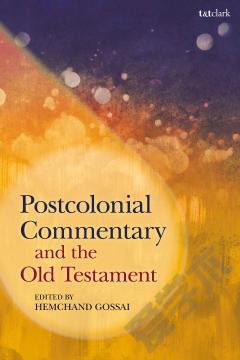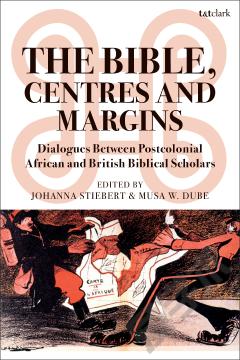The Bible and the Third World: Precolonial, Colonial and Postcolonial Encounters
The Bible and the Third World: Precolonial, Colonial and Postcolonial Encounters, by R. S. Sugirtharajah. Cambridge: Cambridge University Press, 2001. Pp. x + 306. $70.00/$25.00. Postcolonial Criticism and Biblical Interpretation, by R. S. Sugirtharajah. New York: Oxford University Press, 2002. Pp. ix + 231. $17.95 (paper). To suggest that R. S. Sugirtharajah's The Bible and the Third World: Precolonial, Colonial and Postcolonial Encounters (2001) and Postcolonial Criticism and Biblical Interpretation (2002) are important books of "hybrid" genre is at once to acknowledge Sugirtharajah's success in advancing the causes of postcolonial criticism in biblical interpretation and to observe the uneasiness, the disjointedness, of the proximity in which the two subjects continue to lie. Perhaps this is because, as Sugirtharajah argues in his second text, "there has been a remarkable unwillingness to mention imperialism as shaping the contours of biblical scholarship" (PC, 25). If so, these two recent works-which borrow greatly from each other and function as two volumes-make great strides in redressing this oversight. We turn first to The Bible and the Third World: in ch. 1, "Before the Empire: The Bible as a Marginal and a Minority Text," Sugirtharajah contextualizes the Bible prior to its introduction to Europe, citing its influence as one among many religious documents. He describes the Bible's introduction to India through the simplified text of the Peshitta and the rare, untranslated Syriac version. In a discussion of the Bible's relationship to China, Sugirtharajah demonstrates how selected portions from the NT introduced by the Nestorians were translated and modified: the Monument text, for example, contains Buddhist, Taoist, and Confucian references and omits the death of Christ. Thus, Sugirtharajah emphasizes, "the Christian Gospel was seen as validating the ancient social customs of the Chinese-loyalty to the Emperor and fidelity to family" (p. 25). African Donatists, in this account, were able to use the text of the Bible to understand their oppression and to evoke God even as they bypassed the church officials who were also their persecutors. As Sugirtharajah concludes, prior to the alignment of Christianity with Europe, the theology introduced in the Bible often had to be altered in order to signify, was usually known only through small portions rather than the complete work, was understood through liturgy or as a mystical object rather than its text, and was one among many compatible religious documents. Chapter 2, "White Men Bearing Gifts: Diffusion of the Bible and Scriptural Imperialism," begins with the Bible's translation from Latin into English, the British and Foreign Bible Society's mass distribution of the Bible (at or below cost), the difficult translation of the Bible into foreign languages, and the call for British missionaries. The bulk of the chapter testifies to the Bible's use as a colonial tool; Sugirtharajah emphasizes the ways in which the Bible was interpreted to "inculcate" European values and customs; and biblical Scriptures were drastically altered to "encroach" upon cultural histories, so that to explain "sin" among the Panare, for example, the Bible was rewritten to make the natives responsible for Christ's crucifixion. Alternately, local non-authoritarian leadership might need to be "displaced" before the Bible's mores could be "properly" understood; through "analogies and implication," the violence of colonialism could be explained and defended as just punishment for sinful, ignorant lives. Instead of native oral traditions, written communication was privileged; and whereas belief in the Bible was confirmed as historically accurate, other religious tests and artifacts were dismissed as superstitious and inauthentic. Despite this exploitation, "resistant" biblical readings by colonized people were also possible. Sugirtharajah exposes subversive techniques and recovers several important but overlooked critics in ch. â¦
{{comment.content}}








 京公网安备 11010802027623号
京公网安备 11010802027623号